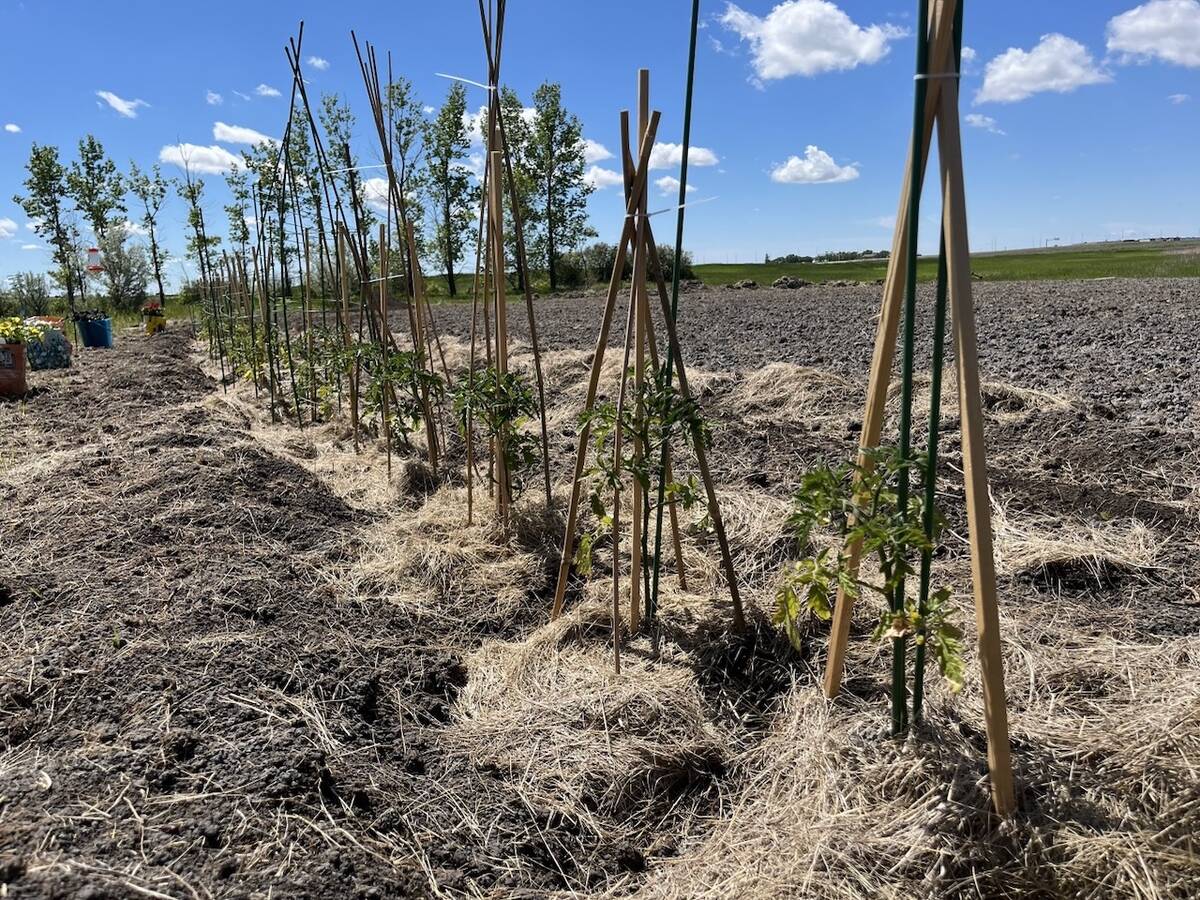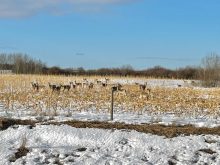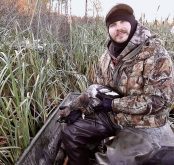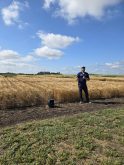The deer season is the finale of the hunting year for many hunters and, ahead of that season, hunters often look forward to traditions that are an essential part of the deer hunt.
Afterward, gear is stowed, we dust off the ice-fishing equipment and we focus on bringing the fall bounty to the table.
Muzzleloader season is about to open or is already open in places along the Ontario border, while the general rifle season for white-tailed deer begins Nov. 13 and runs into December.
Read Also

Seeding Indigenous agricultural prosperity
National Circle for Indigenous Agriculture and Food says Indigenous agricultural success needs strong relationships.
Last winter hit early and the snowpack lingered into April in many areas. Those kinds of conditions usually lead to more deer dying off than normal. Combined with another challenging winter the previous year, hunters should assume their favourite haunts will be a little sparse in 2023.
That said, reports speak to decent numbers of deer, depending on region.
The bow-hunting season is in full swing, but for those who only hunt with a gun, sights are set on late October and November.
Hunting season dates are little different from last fall. The muzzleloader season opens Oct. 23 in most areas and the general rifle season opens Nov. 13. Check the 2023 Manitoba Hunting Guide, (available online or at many provincial government locations or hunting retailers) for a specific region’s opening dates, as well as details on second or even third deer tags. These opportunities are tied to certain game hunting areas, so check closely.

Mule deer and CWD testing
This is the second year of generous mule deer hunting opportunities. Mule deer can be taken in game hunting areas along the Saskatchewan and U.S. borders, the rest of southwestern Manitoba and areas surrounding Riding Mountain National Park.
While inflation is hitting us on many fronts, a mule deer licence continues to be a bargain at just $5. This is tied to Manitoba’s efforts to control chronic wasting disease.
CWD remains rare in Manitoba and, so far, it has only been found in western Manitoba. Manitoba’s CWD website states that 22 deer have tested positive over the last two years, out of thousands of samples analyzed. Of those, all but two were mule deer.
Manitoba’s CWD monitoring program requires hunters to submit samples from deer harvested in the Mandatory Surveillance Zone, an area that dovetails with regions where mule deer may be hunted. This year, that includes all deer (both mule and white-tail) and elk taken in the area.

This year, hunters can submit tissue samples rather than the entire head. This welcome change involves learning how to safely remove two lymph nodes from the underside of the neck. I just watched a great video on the process, and it looks quick and easy. Anyone who has field dressed a deer should have no problem.
Hunters can still elect to submit a head if they don’t want to go the lymph node route. The video and other CWD information, including sample drop-off depots, can be found at www.manitoba.ca/cwd.
Our wildlife managers depend on good data and that begins with hunters’ samples.
Hunters have an enviable history of volunteering time and dollars for conservation. Submitting samples for CWD testing is a small ask, but it’s key to the future of deer and deer hunting in this province. And if on the rare chance your animal has CWD, you will be informed quickly. I encourage every hunter to do their part.
Anticipating the hunt
Unlike bird hunting, deer hunters often tie their pursuits to a single area rather than travelling around looking for concentrations of game.
Many set up a deer camp, an accommodation often just big enough to hold some bunk beds, a simple eating area and lots of hooks on the wall for clothes and hunting paraphernalia. It doesn’t matter how rustic it is. Hunters don’t come out for the lodgings.
Beyond the utility of being close to the hunting area, folks look forward to tales told around a lantern, the walks and waits along deer trails and the hope of wild game in the freezer.

For many, the annual deer hunt takes on elements of ritual, right down to set menus, camp chef assignments and who hunts where on a given day.
I started deer hunting with my brother, Robert, on his farm on the south side of Riding Mountain National Park. Based out of his log home and involving sumptuous pre-dawn breakfasts, we weren’t exactly roughing it.
We evolved to hunting near the Saskatchewan border, where we spent much of the day walking quietly through pastures and hay fields looking to surprise an animal. It’s an exciting way to hunt, but the shots are sometimes a challenge.
When my son became old enough to join in, I decided that spending the hunt in a deer stand, where he could have a good shot at a standing deer, was a better approach.
I also wanted to use our family cottage in the Whiteshell for deer hunting. It meant cutting ties with my traditional hunting grounds alongside my brother – not a small consideration – but we ultimately decided to launch a new tradition.
One of my cottage neighbours was a seasoned Whiteshell hunter. He counselled us to look for spots that concentrated deer movements. He also told us to stay on the stand through the day, since forest deer can be on the move at any time.
We found the advice to be sound. We’ve taken many deer at times when most hunters are relaxing back at camp.
One spot he suggested had beaver ponds and meadows connected by a tiny creek, which wound through ash and balsam fir woods. The name, Moose Creek, came from the fact that we found fresh moose tracks on our first scouting trip. Since then, we’ve spotted other moose tracks and one old, dropped antler, but never the real thing. Still, the name has stuck.
Over the last two decades, we have taken many deer at Moose Creek. More importantly, we have developed a love for the place well beyond its hunting attributes. Outside of the deer season, my wife, Linda, often takes a stroll with me along the trail I have cut to the main hunting area.
We start our visits in the summer, when we set up a trail camera to assess deer numbers. Then there are early fall trips to refurbish blinds, do a bit of grouse hunting and pick mushrooms. Moose Creek happens to be the best place I have found for lobster mushrooms (Hypomyces lactifluorum), a wild-harvested delight that goes especially well with barbecued steak.
There is something magical about the place. The mix of towering ash trees, robust fir thickets and the little grassy creek awakens the senses. My hunting strategy, which is to park myself on a stool in a ground blind all the way from first light to just before sunset, gives me plenty of time to study the scene. Somehow, it doesn’t grow stale.
Certainly, the all-day wait in one spot becomes a slog, but it’s part of the hunt.

Today, my sixth decade is mostly in the rear-view mirror, and my stamina and confidence aren’t what they used to be. I see every Moose Creek deer hunt as possibly my last.
Two decades ago, the extra effort didn’t seem like a big deal. We shot some big bucks, but I was fit enough to drag a carcass across old beaver dams and fallen logs and back to the boat.
Now, trails are cut and a sled makes the trip much easier. I don’t make the boat trip if the weather is wrong. I also pack a dry-bag with any gear needed to spend the night. There is also a cell tower a few miles away.
My brother and sister-in-law generously keep an open deer-hunting invitation for me, and I have taken them up on it a few times.
That said, the blinds have been refurbished, the trail to Moose Creek is spruced up, and I even picked a few lobster mushrooms in anticipation of a venison roast. If a good weather forecast comes along at the right time of year, there may be one more “last hunt” at Moose Creek.
















